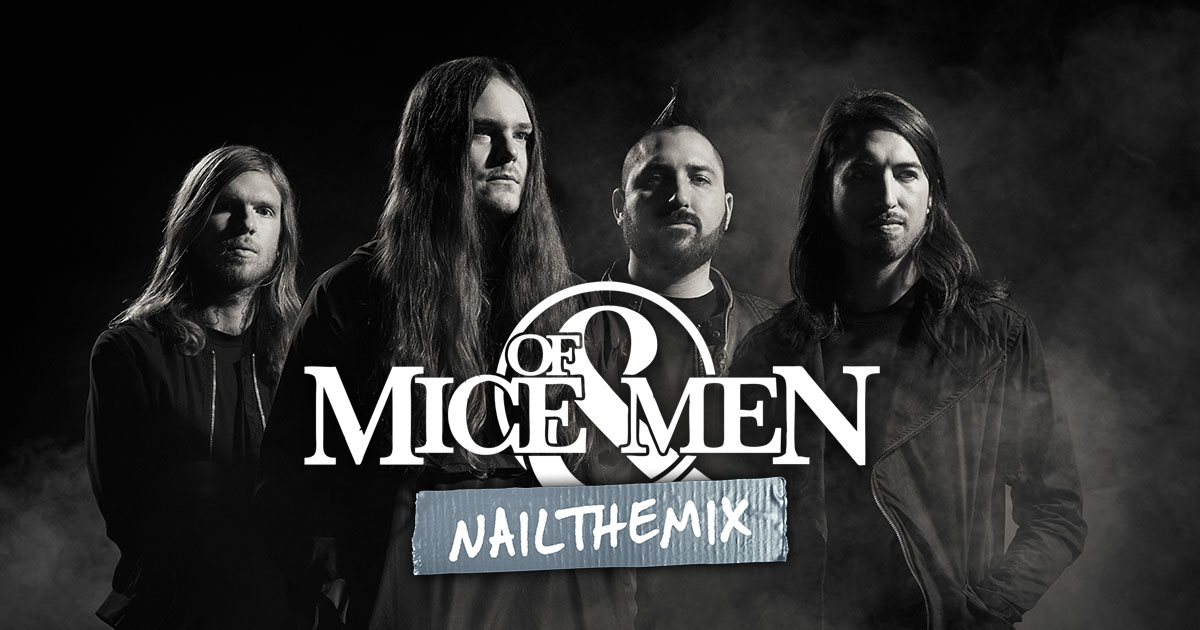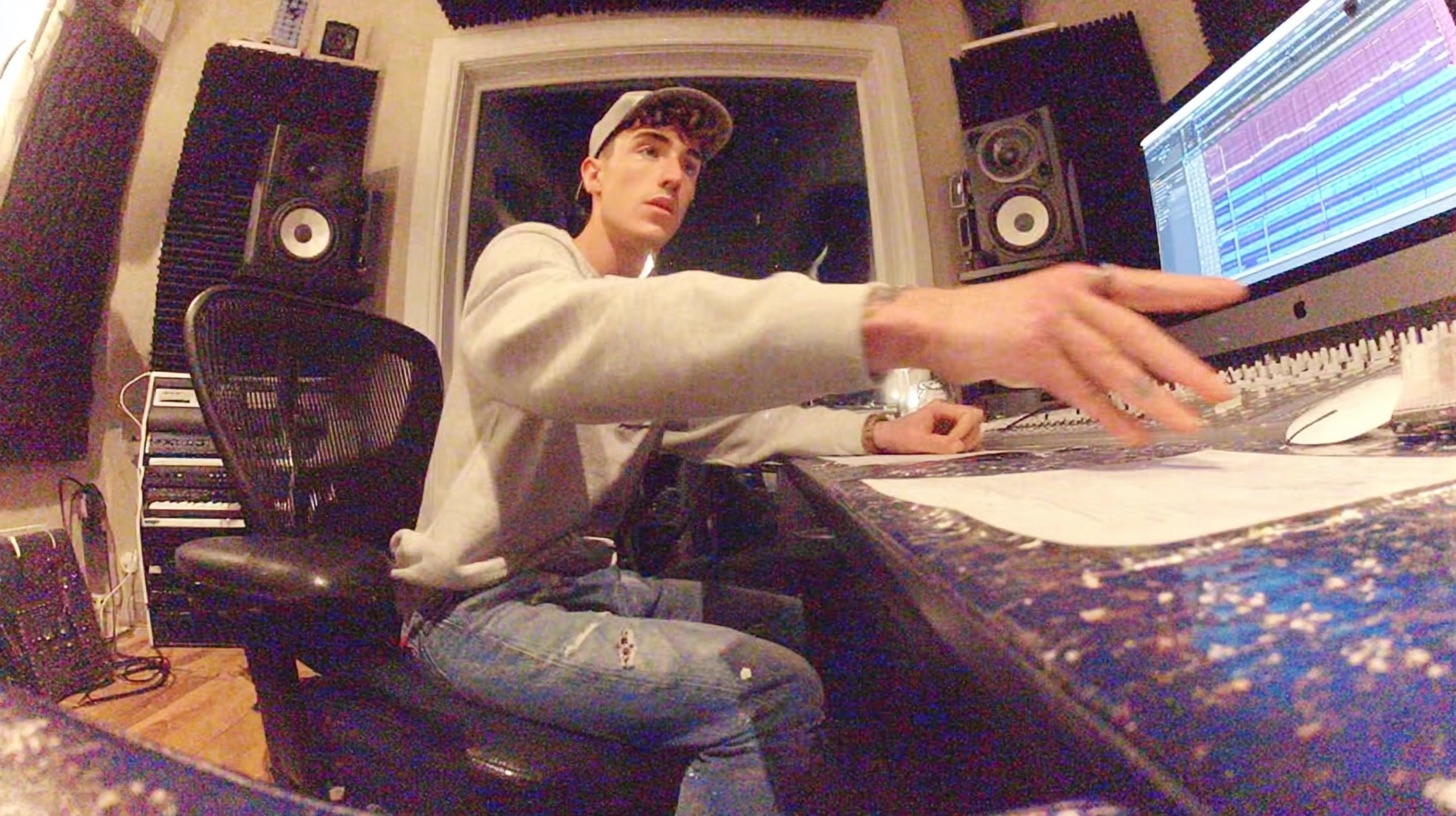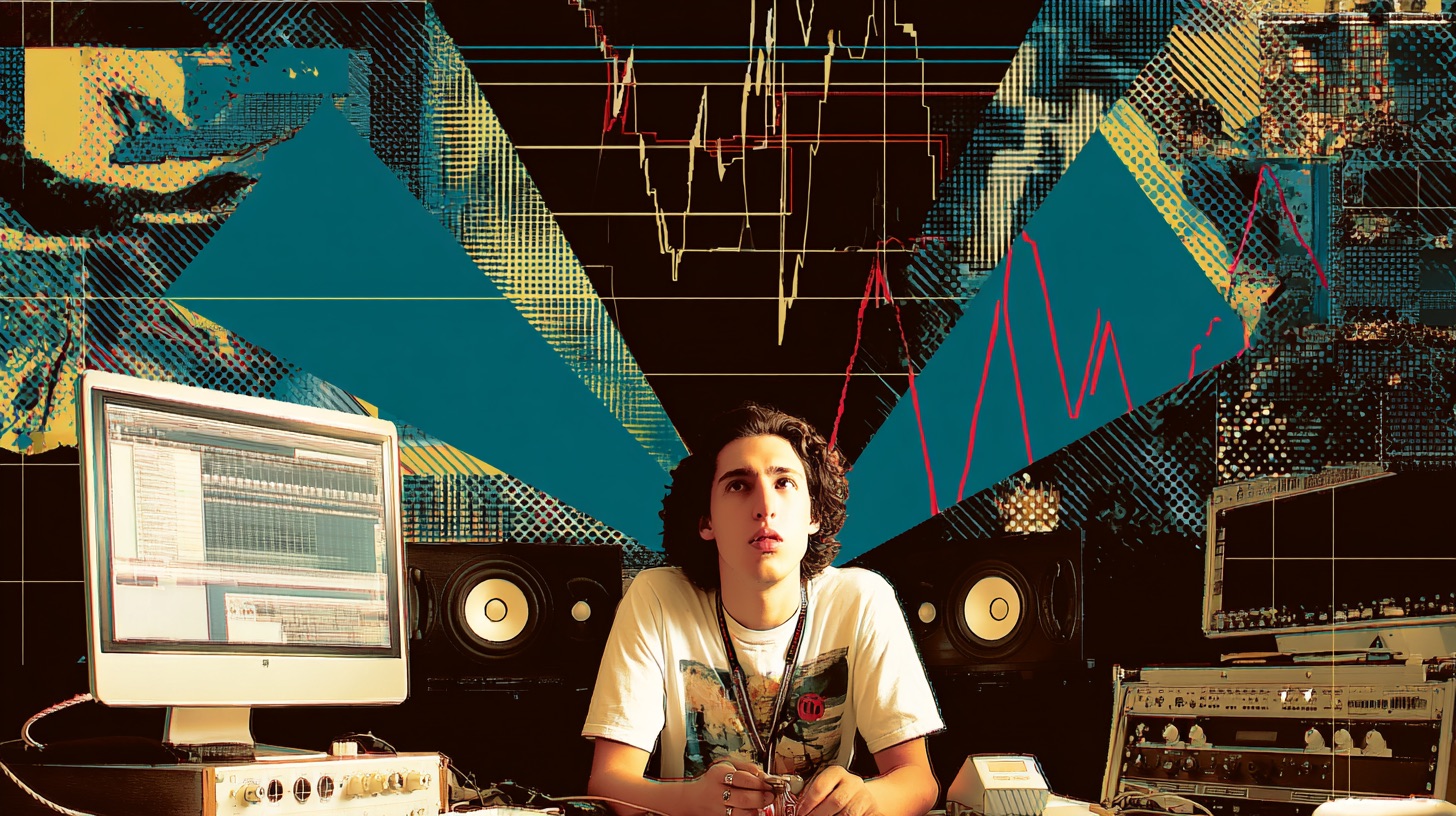
Mixing Lorna Shore’s Inhumanly Fast Drums with Josh Schroeder
Nail The Mix Staff
Lorna Shore’s drum sound is nothing short of a force of nature. It’s punishingly fast, surgically precise, and hits with the impact of a cannon. Ever wonder how producer Josh Schroeder gets that kick drum to cut through such a dense, brutal mix without turning into a muddy mess?
You might think it involves some ultra-rare, boutique sample library. But as Josh revealed, the starting point was surprisingly common—a meme-level kick sample that he twisted, distorted, and surgically processed into the monster you hear on the final record. Let’s break down the method behind the madness.
It All Starts with a Meme: Abusing Slate Kick 10
Yeah, you read that right. The foundation of this insane kick sound is the infamous Steven Slate Drums “Kick 10.” It’s a sample so widely used that it became an inside joke in the studio. But that’s where the genius comes in. Josh Schroeder loves taking something familiar, even a running gag, and mangling it into something completely new and unique to the song.
The key takeaway here isn’t to just use Kick 10. It’s the philosophy: you can take almost any starting point and, with enough creative processing, make it entirely your own. The original sample becomes unrecognizable, serving only as a blank canvas for heavy-handed sound design.
The Recipe: Aggressive Gating, Distortion, and EQ
A raw sample won’t cut it for a band like Lorna Shore. The real magic happens in the processing chain, which involves a brutal combination of shaping, added grit, and surgical EQ.
Tighter Than Tight: The Ultra-Short Sustain
First things first, for deathcore and metal with inhumanly fast blast beats, a kick drum’s sustain is the enemy. It just builds up low-end rumble and makes everything sound convoluted.
Looking at the kick sample’s envelope, Josh shaped it to be almost a vertical line. There’s practically zero sustain and release. It’s just the initial transient—the “click” and “thump”—and then it’s gone. This ensures that every single one of Austin Archey’s stupidly fast kick hits has its own space to exist without blurring into the next one. It’s all about creating clarity through an unnaturally tight sound.
Adding Top-End Grit with Parallel Distortion
To give the kick some aggressive character and help it slice through the wall of guitars, Josh set up a parallel distortion channel. He sent the kick to a bus and slapped on a distortion plugin emulating an old Rat pedal.
Here’s the crucial move: he used an EQ to roll off a ton of low end before it hit the distortion. Distorting kick drum low-end can quickly become a flubby, ugly mess. By filtering it out first, the distortion only affects the mid and high frequencies, adding a nasty, crunchy texture and hype to the top end without destroying the kick’s fundamental weight.
Carving Space with an EQ Gauntlet
You might see a chain of five EQs on one track and think it’s overkill, but there’s a method to this madness. Josh prefers using multiple EQs to make distinct moves. It allows him to easily A/B a specific change and visualize each step of the process.
Subtractive EQ for Clarity
In the chain, you’ll see specific, narrow cuts. For instance, a dip around 102 Hz. Now, this isn’t some magic frequency to scoop on every kick. This decision was made entirely in the context of the full mix. That specific frequency was likely clashing with the bass or the low-end of Adam De Micco’s guitars. It’s a prime example of why you need to use EQ strategies to make instruments fit together, rather than just making them sound good in solo.
Additive EQ for Articulation
With a band this fast, articulation is everything. To make sure the kick’s beater attack is audible, Josh added a little boost to the high end. This gives it that “click” that can cut through even the most chaotic passages.
Taming the Beast with Dynamic EQ
Even with a super-short sample, during the fastest blast beats, the low end can build up and the high-end click can become overwhelming and machine-gun-like. The solution? Dynamic processing.
Josh used a FabFilter Pro-Q to create dynamic EQ bands. Here’s how it works:
- Low-End Control: A dynamic band was set on the low frequencies. As the kick pattern gets faster and more intense, this band automatically ducks the low end by 1-2 dB. It keeps the initial punch on slower hits but prevents the bass from turning into a muddy cloud during blasts.
- High-End Taming: A similar dynamic band was placed on the high-end “click.” As the kicks speed up, it slightly pulls down the harsh attack, preventing it from sounding grating and artificial.
This is the same principle often applied to rhythm guitars or bass: get the initial impact, then get out of the way to let other elements breathe. It’s a more advanced form of control than static EQ, falling into the same family of problem-solving tools as multi-band compression.
Putting It All Together
Crafting the Lorna Shore kick sound is a masterclass in aggressive, context-aware mixing. It’s about taking a simple source and using every tool in the box to force it into submission.
- Start with any sample, even a common one, and commit to making it your own.
- Use aggressive gating and an ultra-short release to keep fast parts clean.
- Create parallel distortion for top-end grit, but EQ the lows before the distortion.
- Use dynamic EQ to control low-end buildup and high-end harshness during the most intense sections.
These are the kinds of techniques that separate a good mix from a professional one. It’s one thing to read about it, but it’s another to see it in action.
Lorna Shore on Nail The Mix
Josh Schroeder mixes "To the Hellfire"
Get the Session
At Nail The Mix, you get to watch producers like Josh Schroeder build these tones from the ground up, explaining every plugin choice and mixing decision along the way. If you’re ready to move past presets and learn how your favorite records really get their sound, it’s time to see how the pros do it. You can see what it’s all about and unlock your sound here.







